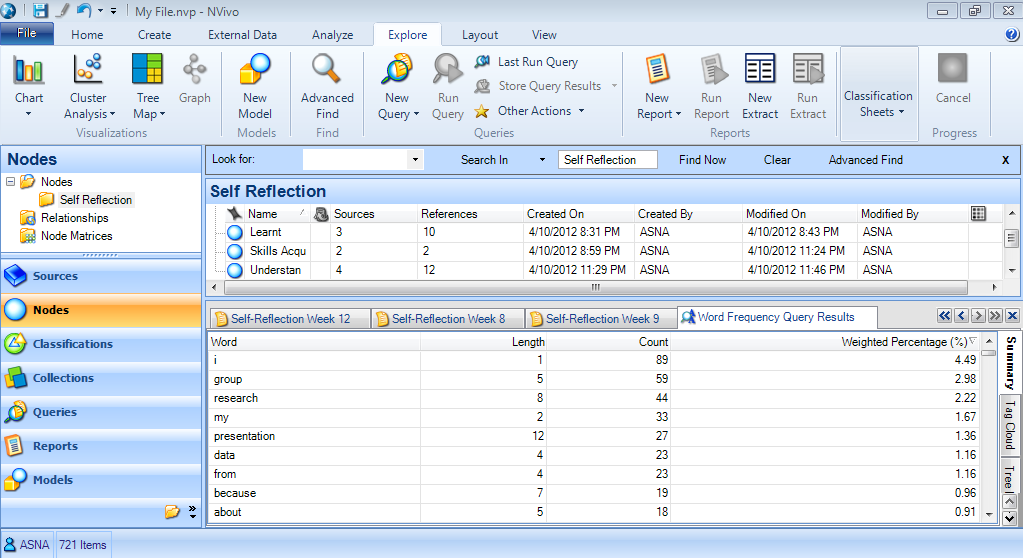

Nvivo codes code#
We recommend that you code only the data that specifically relates to the node that you are coding to. It also makes it difficult to discern patterns in the data. Unfortunately, this can create problems later on as you end up with lots of extra reading around the primary content. Many researchers intuitively want to include surrounding contextual data. Keep in mind though that ‘less is more’! Be selective about how much data you codeĪnother area where the ‘less is more’ principle applies is in relation to the amount of text to select when coding. One of the most common questions we’re asked is “How many nodes should I have in my NVivo project?” Our usual response is that there is no magic number – this will be driven by your methodology and research questions, the type of analysis you are looking to perform, as well as the nature of your data. The downside of this is that it is very easy to get carried away! Having a large number of very specific nodes can slow you down and negatively impact on the overall quality of your data analysis. One of the problems with NVivo (admittedly a positive one) is that it is very easy to create nodes and perform coding. Keep an eye on the number of nodes in your project Descriptions can be entered as you create a node within the ‘New Node’ dialog box, or you can insert and amend them at a later stage. For those of you working in teams, descriptions are particularly important to ensure that everyone has a shared understanding of the nodes. Nodes often represent abstract or complex concepts, so it’s easy to forget what you intended, and meanings can evolve over time as your analysis progresses. This can be beneficial both to the coding process, as well as your overall data analysis.

Take the time to enter descriptions when you create nodes. We’re not suggesting that these are the “right” way to code (we don’t believe there is such a thing), but we’ve certainly found that we’ve saved ourselves some time, not to mention headaches, by following the suggestions below! Note that this blog post refers to 'nodes' – if you're using a recent version of NVivo, these have been renamed 'codes'.

We’ve used NVivo extensively for coding over the years and have discovered a number of tips and tricks that we’d like to share.


 0 kommentar(er)
0 kommentar(er)
